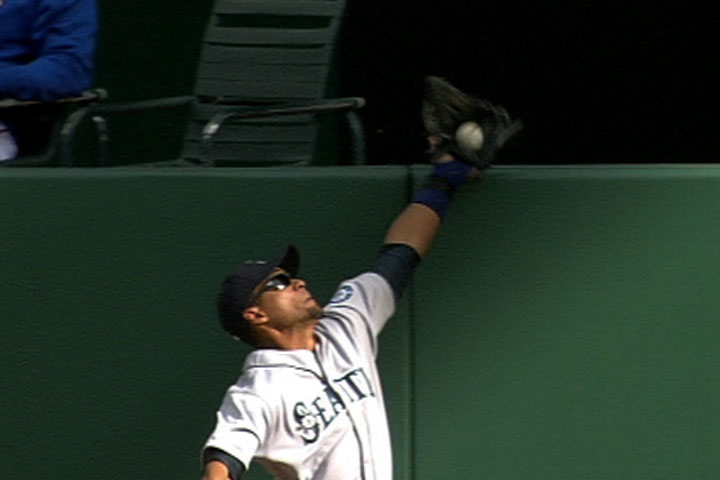- Brian Anderson, RHP, Royals - Anderson, a former outfielder, is yet to appear in any games. My guess is that he is in extended spring training, and hopefully will play in a short-season league, once those start up in mid-June
- Tony Pena, RHP, Giants - Pena, a former shortstop, best known for making Yuniesky Betancourt a legitimate upgrade for Kansas City last year, is currently pitching in relief at AA Richmond. Through 7 appearances, and 11 innings, he has a 0.82 ERA. Pena also is holding opponents to a .139 batting average, and sporting a superb 2.86 ground out to air out ratio. Granted, this is all in only 11 innings of work, but in 19.1 minor league innings at the end of last year, his ground-to-air ratio was an even 3.00! Pena seems to have a pretty heavy sinker, which should make him a decent reliever. He could induce a double play, and also turn it with his shortstop skills. As a somewhat random sidenote, what if the Mariners had a guy with Pena's skillset? He could be the seventh man out of the bullpen, while also being a late inning defensive replacement at shortstop when Jack Wilson is a little dinged up.
- Sergio Santos, RHP, White Sox - Santos was the player that prompted this updated post in the first place. He pitched against the Mariners over the weekend, and looked quite good. To this point, he has appeared in eight games, logging eight innings, and is yet to give up a run. Santos has only given up 2 hits, while walking 3, and striking out 10. Again, it is early, so the sample size highlights promise, but can't be used to conclude anything definitely really. However, since Santos is in the majors, we also have some pitch type data to look at. His fastball is averaging 95.9 MPH, and he also features a change-up and slider, each that average around 86 MPH. Fangraphs linear weights suggest all have been above-average pitches for Santos, which his early production backs up. Furthermore, the slider-change up combination should allow him to be effective against lefties and righties. White Sox manager Ozzie Guillen has called Santos a closer in waiting, and I would have to agree with him, based on what little we have seen so far.
Still, Santos and Pena raise a couple questions for me.
First of all, how difficult is it to be an effective reliever? Both of these guys are starting off at high professional levels, with extremely limited pitching experience, and more than holding their own. It seems that a live arm paired with good athletic ability is a winning combination. That's hardly new news, but it is nice to see some anecdotal evidence. Furthermore, if the combo is as safe of a bet as Pena and Santos are making it appear to be, just about any slick-fielding shortstop or center fielder is a candidate for this theoretical hybrid roster spot of mine.
Second, how crazy is the idea of a hybrid roster spot? I am digging into college prospects right now, and many players have experience pitching and playing the field. Truly, the only level we do not see it is in the pros. What's stopping a team from carrying a guy that's just halfway decent as a middle reliever, and then also using him as a late-inning defensive replacement if he can play the field? Middle relievers see action from the fifth through sixth or seventh innings, and defensive replacements come in around the eighth or ninth. A manager should not have to make an either/or decision, especially in the National League, where the pitcher is batting already. Particularly, Tony Pena's skillset seems perfect for this role.
I realize I am going on a total of 19 innings between two players, so I have probably analyzed way too far with what little I have. However, I thought the idea could work before I had any numbers to look at, and the early returns could not be any more promising. In the right hands, a pitcher/defender hybrid makes a roster play like it has 26 men, which seems advantageous to me.


